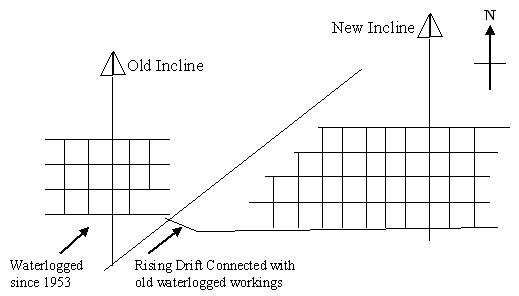Envis Centre, Ministry of Environment & Forest, Govt. of India
Printed Date: Friday, January 2, 2026
Damua Colliery on 5.1.1960
Damua Colliery
| Date of the Accident |
- 5.1.1960 |
| Number of persons killed |
- 16 |
| Owner |
- Kanhan Valley Coal Co. Ltd. |
| Place |
- Dist. Chhindwara (M.P.) |
A rising drift got connected with old, water-logged workings other side of the fault due to failure of the 2 m parting between the face and the old workings.
Development workings on the west side in Damua seam had met a fault of 7.5 m throw and were therefore discontinued in 1953. The seam was later developed on the east side of the fault. In December, 1959 the management decided to establish a connection with the west side workings by driving a rising drift, purportedly, for improving ventilation of the workings. When the drift had reached within 2 m of the fault plane, work was stopped. As the west side workings were likely to be full of water, some boreholes were drilled to tap the water. One borehole connected with the accumulation of water on 31.12.1959 and water started flowing full bore through this hole. On 1.1.1960 four shotholes, 0.9 m deep, were drilled and blasted. Again on 4.1.1960, two holes were blasted in the sides of the gallery. These blasts caused further weakening of the already weak strata around the fault plane and on 5.1.1960 the intervening parting of about 2 m between the working face and the water-logged workings gave way causing sudden inrush of water into dip headings. At the time of the accident, 37 persons were present in the underground working out of which 21 persons could manage to reach the surface and 16 men who were working in the dip faces were overcome by the current of water and were drowned.

The Court inquiring into this accident was not convinced with the plea of the management that the connection was intended for improving ventilation because this connection would not have made much of a difference. Moreover, normally in such a case, the connection would have been made after pumping out the water from the workings on the rise side of the fault. Probably, the real reason was that the management was in a hurry to work a patch of virgin coal area on the rise side of the fault and this tempted the manager to take undue risk in making a small connection quickly and draining out the water. However, the risk taken was too serious to be considered anything but criminal.